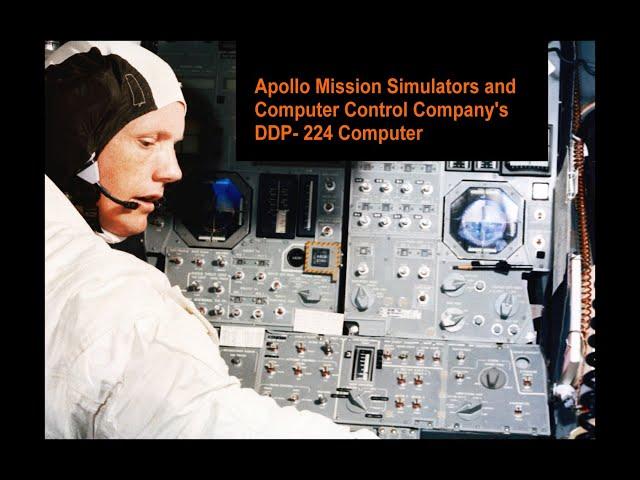
NASA Apollo Mission Simulators & Computer Control Company's DDP-224 Vintage Computer 3C NASA SPACE
Комментарии:

Between 1980 and 1981 I worked at the Northern European Command, Command Control and Information Systems at the NATO HQ Oslo. I promoted the Singer Link Flight Simulator for the F-16 Fighter Jets and travelled around in Germany, England and Switzerland. Thank you.
Ответить
Magic! Impressive what the Americans did.
Ответить
During the early to late 1960’s I worked on the DDP-224 computers while on the test floor at Computer control company in the Framingham facility (the good old days). I also worked on the prototype H-632 used for NASA during the Apollo missions. They asked me if I wanted to go to Kwajalein island in the Pacific to baby sit the H-632, I could not go because I was planing get married in 1968. So I trained someone else on the H-632, and he went, I made his career when he put that experience on his résumé.
Ответить
You could add this to your 'Vintage SPACE, NASA, Apollo, Science Fiction' playlist
Ответить
Even today it still all looks Amazing, how much of this has been saved for future generations to see and look at and learn about and from.
Ответить
I worked for LINK as a NASA contractor in the early 70s on the Apollo Command Module simulator portion of SkyLab and later Soyuz missions. We had 8 General Precision GP4-Bs running in parallel talking to an IBM 360 through a DEC PDP 8. All the star scenes were electro-mechanical "star balls" which were huge black anodized spheres with different sized ballbearings pushed through holes from the inside to simulate the stars. The star balls were mounted on a three axis gimbal mount, driven by the computers, and illuminated with a columnated light source. When the astronaut looked out the window, he saw the precise star scene he would see on the mission. It was an amazing Rube Goldberg lash-up, but it worked well. However, all the electro-mechanical stuff as well as the HUGE GP-4B computers took constant skilled maintenance. My first job there was tweaking up the sense current on the core memories....yes, core memory. All back when NASA had the Right Stuff.
Ответить
Shout out to CuriousMarc's team on getting an AGC running again
Ответить
Money well spent that was worth the ride!🚀
Ответить
Wow, as usual. Memory was so expensive (and slow) they had to use every trick to conserve it, I.e.,the year ‘1961’ was stored as ‘61’. Surely, by Dec 31, 1999, someone will fix that ;-)
Ответить







![[방탄소년단/BTS] 뱁새(Baepsae) 무대 교차편집(stage mix)(Use Headphones) [방탄소년단/BTS] 뱁새(Baepsae) 무대 교차편집(stage mix)(Use Headphones)](https://invideo.cc/img/upload/OEJUUmJXODZiWXg.jpg)

















